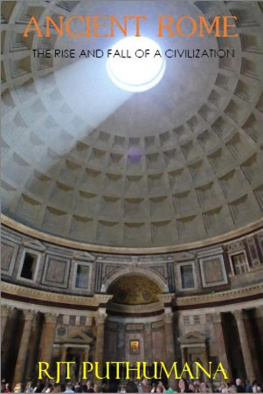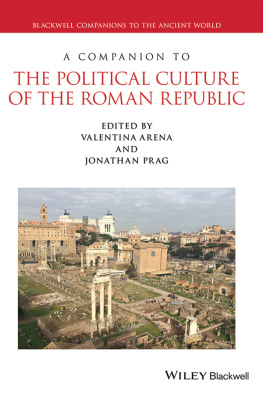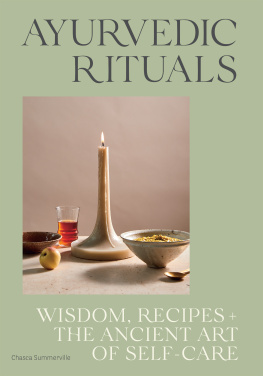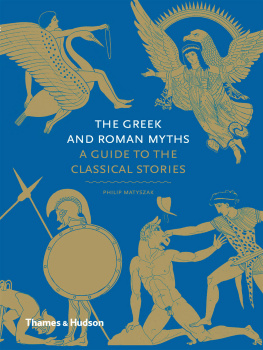Frances Bernstein, Ph.D.
C O N T E N T S
J A N U A R Y
The Month to Begin
F E B R U A R Y
The Month to Purify
M A R C H
The Month to Plant the Seed
A P R I L
The Month to Conceive
M A Y
The Month to Blossom
J U N E
The Month to Nurture
J U L Y
The Month to Savor
A U G U S T
The Month to Reap
S E P T E M B E R
The Month to Harvest Life
O C T O B E R
The Month to Promise
N O V E M B E R
The Month to Accept
D E C E M B E R
The Month to Hope
A BRIDGE FROM THE PAST
My team of archaeologists worked long summer days inside the homes of ancient Pompeians. We measured, photographed, and recorded the colorful mythic scenes painted on the walls. We did not expect that these powerful archetypal images of gods and goddesses, nymphs and heroes, birds, dogs, snakes, flowers, trees, labyrinths, or rituals would trigger dreams. We came to realize that these symbols painted over 2,000 years ago comprised a living language, and to our amazement, we had incorporated these sacred images in our own dreams. Our deeply personal responses to these ancient symbols formed a bridge and a sacred connection spanning two millennia.
I am telling you the truth, but some will say that I made it up because most people doubt the existence of the deities and the spirits. A god, a goddess resides within each of us. When the spirit arouses us, we radiate with an inner glowan aura. It is this sacred spirit that plants the seeds of all we are and all we do. This sacred spirit is our inspiration.
(Ovid Fasti 6.3)
I cannot take each of you to Pompei. Yet the classical myths and rituals presented in these pages can awaken a deep and ancient connection to the natural world and our spirituality. Dreamlike images of creation, life, and death work on many levels and transcend time. The realm of gods and goddesses is not limited to a prehistoric period or to ancient Rome, but resides within nature and the cycle of birth, life, and death. By tapping into this deeper realm, we touch the underlying and true universals that connect us to the world and guide us in our daily lives.
We journey back to a time when people communed with nature through poetry, myth, and ritual. The sacred calendar of the ancient Romans described an actual pathway for lifes journey with the gods and goddesses as spiritual guides. These deities drew the Romans into harmony with nature and grounded all life. The twelve months charted the path of sacred time by following the never-ending cycle of birth, growth, fullness, death, and rebirth. Ancient practices based upon rhythms of the natural world can strengthen and heal. This earthy ancient lore serves as a guide today, as we search for relevance and meaning in lives that are increasingly cut off from nature and the life of the inner self.
We draw on rituals that were practiced in antiquity for thousands of years in order to trigger intense and deeply personal spiritual and emotional responses. The ancient Romans have given us, through their sacred calendar, a way to live with the mysteries of the natural world. We can come to understand the sacred messagea message that is limitless, omnipresent, and accessible to those who seek it.
ROMAN RELIGION
Religious life in ancient Rome, composed of diverse cults, philosophical schools, and mystery rites, was both rich and complex, spanning a period of over a thousand years. In Rome, there was a temple on almost every corner, some of early origin and others built with the riches of the empire. Many of the rituals presented in this book harken back to the early days of the city, yet some rites were transposed and adapted from the Near East or Egypt. All are authentic; all were once practiced, and therein lies their power.
The great city of Rome was founded in the early centuries of the first millennium B.C.E. (before the common era) by Latin-speaking farmers and shepherds living on the hilltops along the banks of the Tiber River. As Rome grew in size and importance, the Latin people fell under the religious influence of the Etruscans, who lived to the north, and the Greeks, who settled southern Italy during the seventh and sixth centuries B.C.E. and whose deities, rites, and mythology were blended with the more traditional Roman worship. Later, as the Roman Empire expanded into foreign lands, religions from Egypt and the Near East had an impact upon Roman religion. Christianity was one such form of worship from the Near East.
Roman religion was experienced through myth and ritual. The Roman gods and goddesses portrayed in the myths were also honored publicly at temples through prayer, rituals, and offerings that might include the gift of an animal, food, wine, or a small votive such as a clay image. Privately, the deities and spirits were worshiped within each and every Roman household before the household shrines.
THE HOME AS A SACRED CENTER
In ancient Rome, the home and family grounded religious belief and observance. Then, as now, the women often provided spiritual guidance by marking the religious calendar with yearly observances, passing on religious teachings, and creating a sacred sanctuary within the home.
The Romans worshiped before family shrines, called lararia. In the Roman world, the home was a spiritual center and in most ancient times the hearth was the first altar. The hearth goddess Vesta was especially sacred to the Romans; her beneficence meant good fortune would fall on the household. Vestas presence and protective powers were embodied in the living flame of every familys hearth. At her main shrine in Rome, attended by six Vestal Virgins, there was no cult statue because the Romans believed that Vesta herself was the Living Flame.
PRAYER TO VESTA
Come, Vesta, to live in the Beautiful Home.
Come with warm feelings of friendship.
Bring your intelligence,
Your Energy and your Passion
To join with your Good Work.
Burn always in my Soul.
You are welcome here.
I remember You.
The entrance hall, atrium, kitchen, and garden, focal points within the ancient Roman home, were the most common locations for a lararium. Homes often had more than one shrine set up for family rituals. Types of lararia varied from a niche within a wall (the most common) to a miniature temple faade, a separate small building, or just a sacred scene painted on a wall. All household shrines had in common some provision for making sacrifice, either a ledge or altar. Altars could be large permanent ones placed before a shrine or much smaller portable ones set up before a sacred painting. Often a depiction of an altar with burning sacrifice and offerings was painted on the wall next to the sacred scene as permanent testimony.
Women tended these family shrines, cleaning and decorating them to ensure family deities were honored properly. By custom, three times a month, on the Kalends (new moon), the Nones, and the Ides (full moon), women decorated the hearth and the shrines with fresh flowers, woven garlands, and wreaths. In oldest times, the goodwill of the gods and goddesses was won with simple offerings of grain or a few salt crystals. The altar was content to smoke with laurel leaves [bay leaves] crackling in the fire, while the woman who could add a garland of meadow flowers or violets was rich indeed (Ovid













